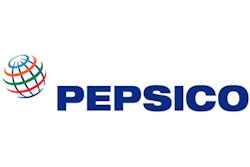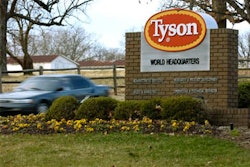This article originally ran in the October 2012 issue of Food Manufacturing.
The Food Manufacturing Brainstorm features industry experts sharing their perspectives on issues critical to the overall food industry marketplace. In this issue, we ask: What unique challenges face processors of beverages and other liquids? How can processors address these challenges?
Kevin Menard, Global Thermal Product Manager, PerkinElmer
There are some unique challenges seen by processors of containers for liquids and beverages due to the complex requirements of safely handling liquids. Ranging from clarity to permeability and printability to heat capacity, these requirements are often conflicting in what they demand from the material.
Clarity is often related to the degree of amorphousness in the polymers used, which is strongly influenced by the cooling rates. HyperDSC, an advancement of fast scanning DSC technology, allows one to study how these rates affect the final material and can be a valuable tool for understanding the material’s behavior.
Similarly, to address many of the conflicting requirements in containers, multilayer films are used in manufacturing containers so that the various layers can be optimized for strength, UV protection and gas permeability. These layers are often very thin and hence can be difficult to analyze by conventional methods. Another permeability concern is whether or not the material leaches anything from the container. This is where techniques like TG-CGMS or TG-IR-GCMS can be useful.
Knowing the glass transition of the various layers is important for understanding long term storage, transporting the container and printing of labels. HyperDSC also allows accurate measurement of the different layers.
Finally, sometimes the behavior of the beverage or other liquid also needs to be considered, and knowing its heat capacity can be useful if it will be heated or cooled during the process. The heat capacity of liquids is often tricky to measure in single furnace design DSCs and best results are obtained with a dual furnace design like the DSC8500.
Wilf Sanguesa, Product Manager, Liquids, Quadro Engineering
Today, beverage and liquid processors are faced with a multitude of challenges. These challenges include transforming complex emulsions and/or powder formulations into liquids providing the desired viscosity, flavor, stability, color, mouth feel, shelf life and microbiological stability.
The challenges are combined with increased productivity and flexibility requirements that traditional mixers and pressure/valve homogenizers are either not capable of offering, or do so at high capital and operational costs.
To counter the many draw backs of traditional technologies, high shear processors utilizing highly engineered rotor-stator technology can disperse or emulsify multiple powder and liquid formulations in a single pass at full production capacities. Traditional methods often require hours of in-tank mixing or recirculation of the products. Even then, they may not fully disperse all ingredients homogenously; and this results in lower quality beverages and product losses.
Single pass rotor-stator technology can reduce, or in some cases, eliminate mixing time, air incorporation, additional holding tanks, powder build up, product heating, filtering of lumpy solutions and lengthy cleaning changeovers. This type of technology will reduce processing times by as much as 80 percent. In turn, high powder to liquid ratios (in some instances as high as 50 percent by weight) can be processed — even continuously — and produce smooth, lump-free and homogenous beverages and liquids.
Furthermore, design advancements in rotor-stator technology have resulted in emulsifiers capable of achieving submicron droplet distributions with a fraction of the energy previously required by high pressure/valve homogenizers.
For example, using high velocity rotor configurations that generate 55 times the disruptive forces of traditional rotor-stator mixers, homogeneous pomace dispersions of fruit and vegetable juices can be achieved without the use of costly high-pressure technology.
Whether the goal is improving beverage properties or maximizing processing efficiencies, or both, the innovation of single-pass rotor-stator technology and high velocity rotor solutions offer the right tools to overcome many beverage processing challenges.
Derek Rickard, Distribution Systems Manager, RMT Robotics
The current reality in the consumer goods world is an explosion of SKUs across the board. Companies tell us their SKU count has more than doubled in the last decade, with annual increases. The beverage industry in particular has seen unprecedented growth as customers demand more choice.
For many retailers the rate of increase in SKUs is faster than the increase in volume. There are limits on how many pick slots can be sensibly and productively accommodated in a distribution center (DC). Increased SKUs means less space for each SKU in store, leading to more frequent ordering in smaller quantities, thus affecting the delivery profile and transport network. For the DC this means smaller order quantities with more split case picking.
In addition, beverage industry picking efficiency is greatly affected by the weight of the product. Manual pickers are typically limited to one case at a time, versus other industries with lighter product that allows pickers to grab several cases of each SKU when picking. Due to these factors, ROI for automation is typically greater for the beverage industry than other food industries.
Automation in its many forms can alleviate the pressures associated with SKU growth, offering better cube utilization and pick efficiencies over the manual status quo. For example, RMT uses gantry robots to provide automated case and layer picking solutions for beverage warehouses. The layer picking solution is of particular interest in the beverage industry as distributors are finding the number of SKU and package types growing, which limits the effectiveness of a fork truck attachment clamp device commonly used in beverage facilities.
Key features that beverage distributors should consider when choosing an automated solution should be the flexible layout options and tooling to handle a multitude of packaging types while reducing the overall footprint of the picking area. The system should eliminate picking errors, improve operational efficiencies and provide 100 percent traceability.























